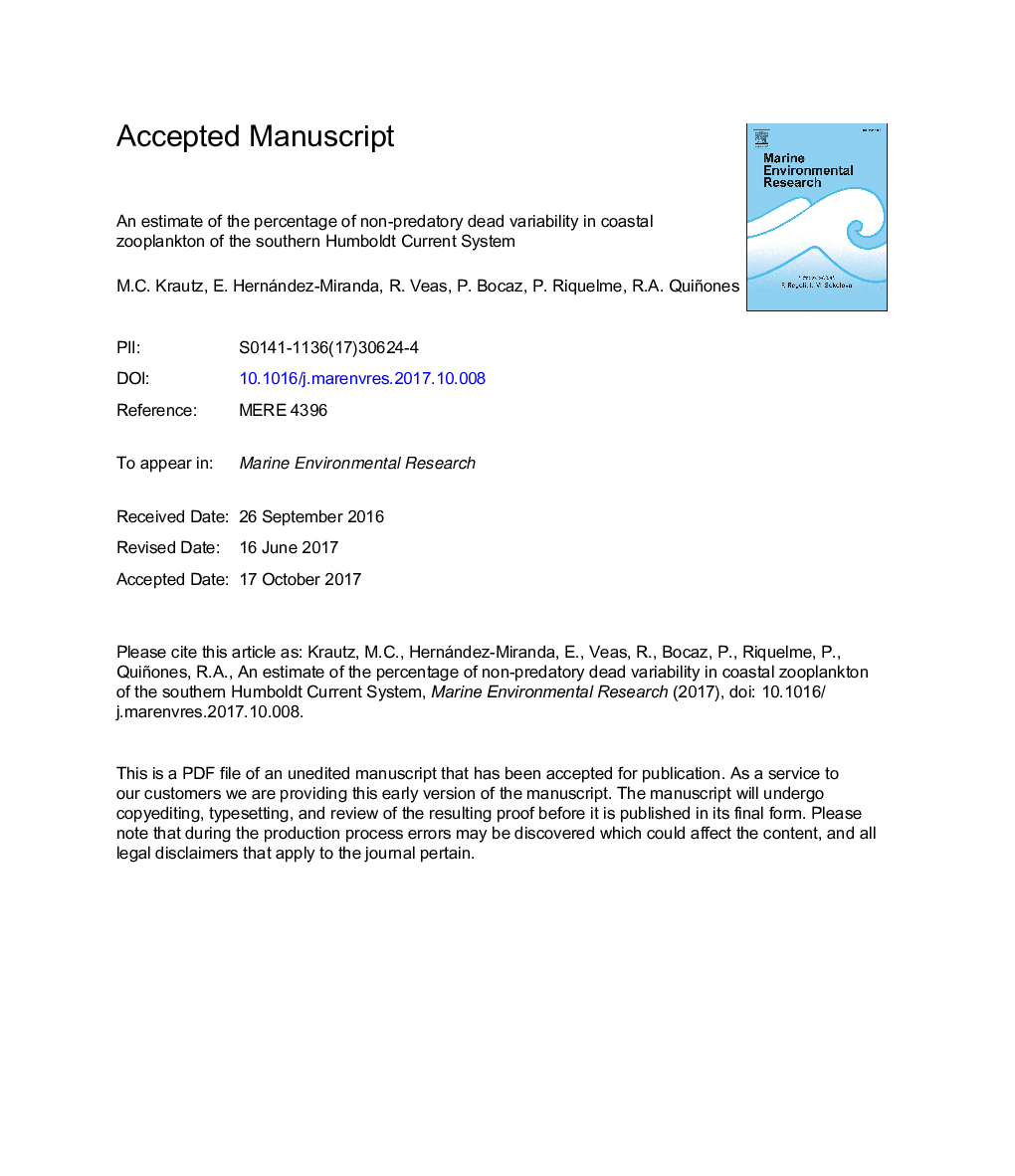| کد مقاله | کد نشریه | سال انتشار | مقاله انگلیسی | نسخه تمام متن |
|---|---|---|---|---|
| 8886421 | 1627551 | 2017 | 43 صفحه PDF | دانلود رایگان |
عنوان انگلیسی مقاله ISI
An estimate of the percentage of non-predatory dead variability in coastal zooplankton of the southern Humboldt Current System
ترجمه فارسی عنوان
برآورد درصد تغییرات مرده بدون غارتگر در زئوپلانکتون ساحلی در جریان سیستم کنونی هومبولت جنوبی
دانلود مقاله + سفارش ترجمه
دانلود مقاله ISI انگلیسی
رایگان برای ایرانیان
موضوعات مرتبط
مهندسی و علوم پایه
علوم زمین و سیارات
اقیانوس شناسی
چکیده انگلیسی
Non-predatory dead variability in zooplankton remains poorly quantified worldwide. Here, we make the first estimation of the percentage of dead organisms in coastal zooplankton communities in the Humboldt Current System (HCS) under in situ conditions. The study was conducted in four coastal sites of the southern HCS (between 36 and 37°S) over a period of one year. Percentages of dead organisms were based on the classification as live or dead of 158,220 holoplankton and 17,591 meroplankton individuals using neutral red staining technique. The percentage of dead organisms in total-zooplankton was between 4.3% in Coronel Bay (summer) and 76.9% in Llico (autumn). The percentage of dead total-holoplankton varied from 4.2% (Itata River Mouth; autumn) to 77.6% (Llico; autumn), while the percentage of dead total-meroplankton ranged from 1.5% to 56.8% in Coronel Bay and Coliumo Bay, respectively. The most abundant taxa analyzed were the copepods Acartia sp., Paracalanus sp., Calanoides sp., Cladocera, Polychaeta, and the eggs of anchoveta Engraulis ringens. Among these taxa, there was a high degree of interspecific variability in the estimation of the dead organisms. The Pearson correlation shows significant relationships between maximum temperature, and minimum salinity, with the percentage of dead individuals of Acartia sp. and Paracalanus sp. Environmental factors explaining those relationships were: the El Niño 2015-2016 event, and freshwater river runoff. The use of vital staining to estimate non-predatory death for total-zooplankton and selected sentinel species is a promising tool to establish baselines to evaluate natural perturbations (e.g. ENSO), and anthropogenic alterations in coastal pelagic ecosystems.
ناشر
Database: Elsevier - ScienceDirect (ساینس دایرکت)
Journal: Marine Environmental Research - Volume 132, December 2017, Pages 103-116
Journal: Marine Environmental Research - Volume 132, December 2017, Pages 103-116
نویسندگان
M.C. Krautz, E. Hernández-Miranda, R. Veas, P. Bocaz, P. Riquelme, R.A. Quiñones,
